Click these links to read Part 1, Part 2, and Part 3.
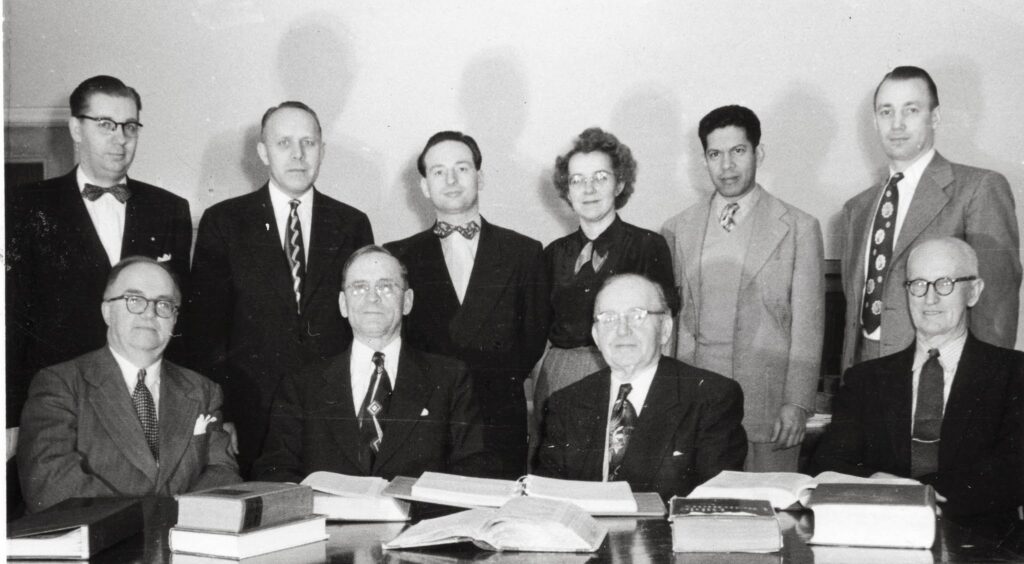
I soon began to work in the Translation Department again. Since Juan did not know English yet, he was unable to find work at first. My dad, always supportive and helpful, would sit and converse with him to help him learn English.
Juan eventually found work with C.W. Silver Company. My grandfather, Jed Ashton, had worked for Silver Company, the ancestors, when it was a foundry. We thought that was quite a coincidence. For Juan, work was not very pleasant. Winter was coming and he was sent to install electric wiring in new homes being built close to the mountains. They were just wooden frames. This meant working out in the cold all day long. It was his first winter in a climate this cold and was very hard on him. He bundled up in a heavy parka with a hood, but when he came home at night his face and hands would be red with cold.
Jordi was attending the Y and would come home each weekend. He was under a lot of stress about his student status, and would spend hours talking to Juan in Catalan about his problems. That is when I realized I understood the Catalan language quite well. I didn’t tell them how well. I began to study the grammar books that we had and became really interested in learning Juan’s language.
Juan was repairing welding machines at Silver Company. He was trying hard to understand and speak English but it wasn’t easy. Some of the people he worked with were not very kind and played tricks on him. The adjustment to a new country with new foods and a new language was not easy.
About the first of December Brother Hinckley asked to meet with me. It was to break the news about Church policy not to employ women who could be home raising a family. I told him I was expecting and we had planned for me to quit by the end of that month. Brother Hinckley blushed – he hadn’t noticed. The Translation Department was on the fifth floor, far from his office on the first floor. I had been wearing my mother’s bulky suits. I think the translators themselves had noticed my condition. They were pretty sharp.
[Juan and Betty welcomed their first child, my dad, in March of 1955. Their second child, a girl, was born the next year in March 1956. They had been attending an English speaking ward but because of certain prejudices my grandfather was not able to advance in the priesthood, and so they couldn’t go to the temple to be sealed. One day while out walking Juan happened to meet Spencer W. Kimball who asked how things were going.]
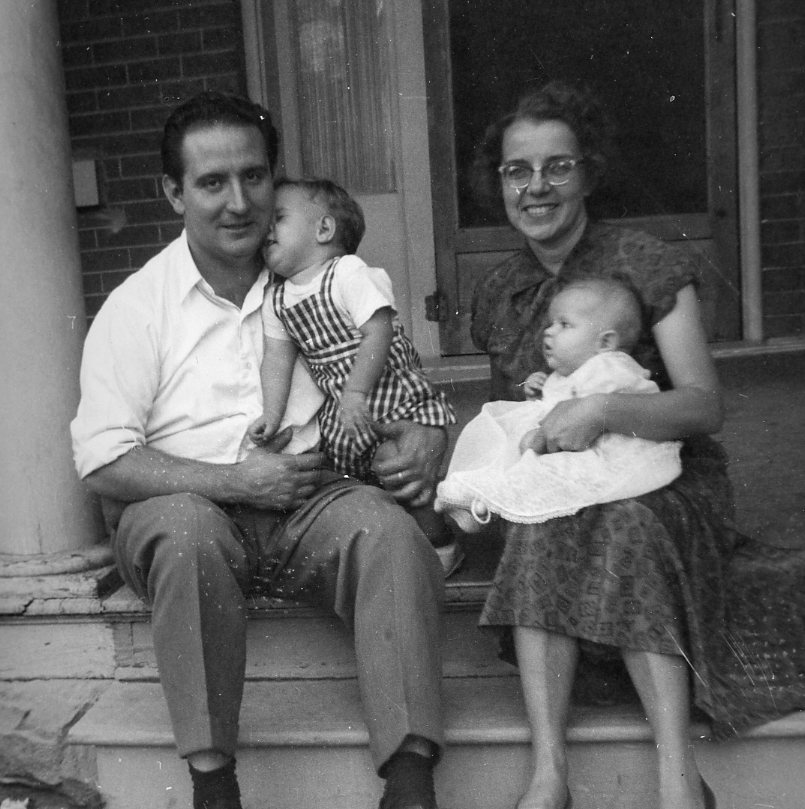
On recommendation of Elder Kimball we began attending the Mexican Branch. The members there were so good to us. Sunday School was in the morning and Sacrament meeting at 6:30. One of the three sisters, Tina, Tila or Lola, would nearly always invite us to a Sunday dinner of rice, beans, frijoles and enchiladas. They just opened up their arms to us.
At the branch, Juan could participate in the classes and began to advance in the priesthood. On December 23, 1956 our stake president, Maurice J. Taylor, ordained him to the office of an elder. At last we were on our way to the Temple! The great day was set for Monday, January 7, 1957. We briefly mentioned it at church the day before – I didn’t know you actually invited people to a temple sealing – and we were surprised at how many of the Mexican members joined with our family in the temple the following day. One sister, Maria Chavez, said she got up at four in the morning to press her temple clothes.
It was such a thrill to be in the sealing room with family and friends, and then the two little ones were brought in, all dressed in white. They were so good, no tears, no fussing, although they were not quite two and three years old. They acted like little adults, like they understood the importance of what was happening. Elder Spencer W. Kimball, who was always our good friend, performed the sealing ceremony.
When we came out of the Temple, my parents took the kids home, and Juan and I just walked about in a state of euphoria. We walked around Temple Square and even visited the Genealogical Department and talked to employees about the wonderful records to be found in Spain and the possibility of microfilming them.
In 1956 Juan was called to teach the Gospel Doctrine class at the branch. After two years, he was made a counselor in the Sunday School presidency on April 20, 1958. He became Sunday School Superintendent November 9, 1960. . .
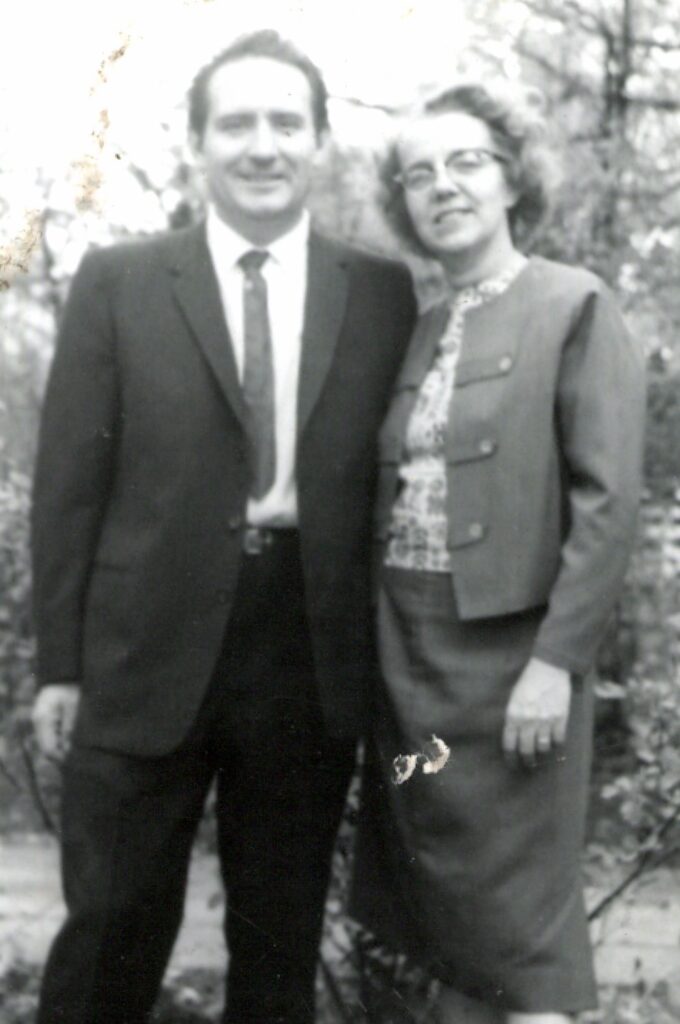
Juan had a great desire to have his own business and in 1958 he joined with two others, Juan Del Hoyo and Arturo Martinez (from the branch), and they established what they called Toledo Metal Arts. It was a metal fabrication company. Del Hoyo was from Uruguay and he began working in the company full-time. Juan kept on with his job at Silver Company and would work with Del Hoyo after hours. Art Jensen, who was a contractor, gave them contracts on jobs he was doing.
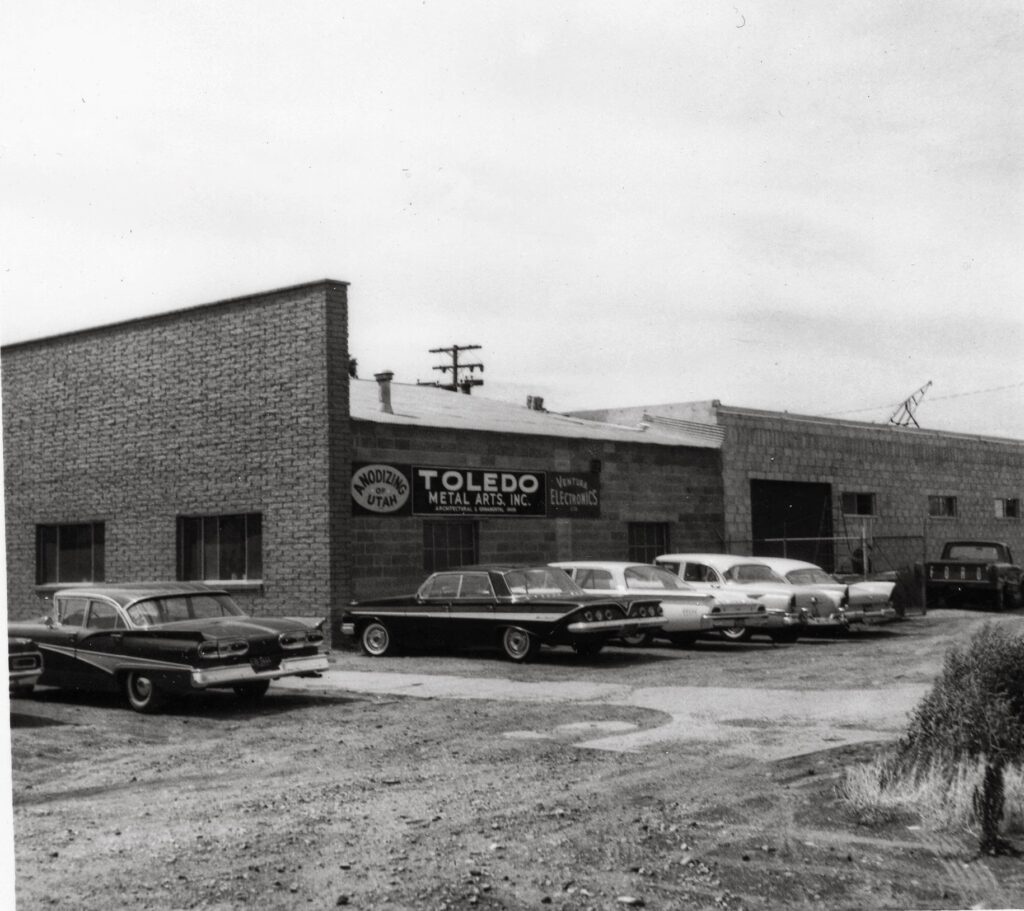
Their first job was making aluminum railings and panels, and mounting them around the balconies of the Utah Motor Lodge. They were given space in the basement to work, so did not have to rent a shop.
Juan’s next work was at BYU in the College of Business. He won the job by being lowest bidder. Here they built aluminum railings and a long fire escape. They did other small jobs such as at the Women’s Dormitory at the University of Utah, and a long aluminum railing leading up the hill to the Salt Lake Ensign Ward.
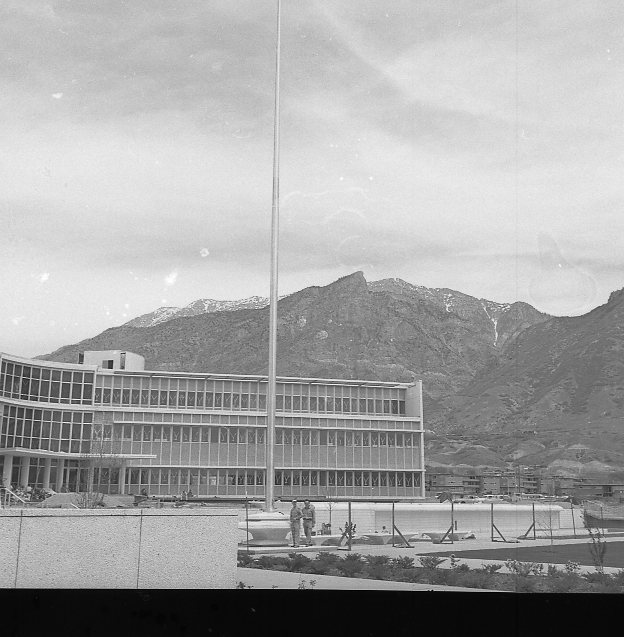
Then Toledo began obtaining bids on different buildings at the BYU Campus, and it became necessary to hire more workmen.
In the next few years they did the following jobs:
- Administration Building, BYU, which included an 89-foot flag pole
- Students Center, BYU, which included two massive metal circular staircases
- Plaque, Winter Quarters, Missouri
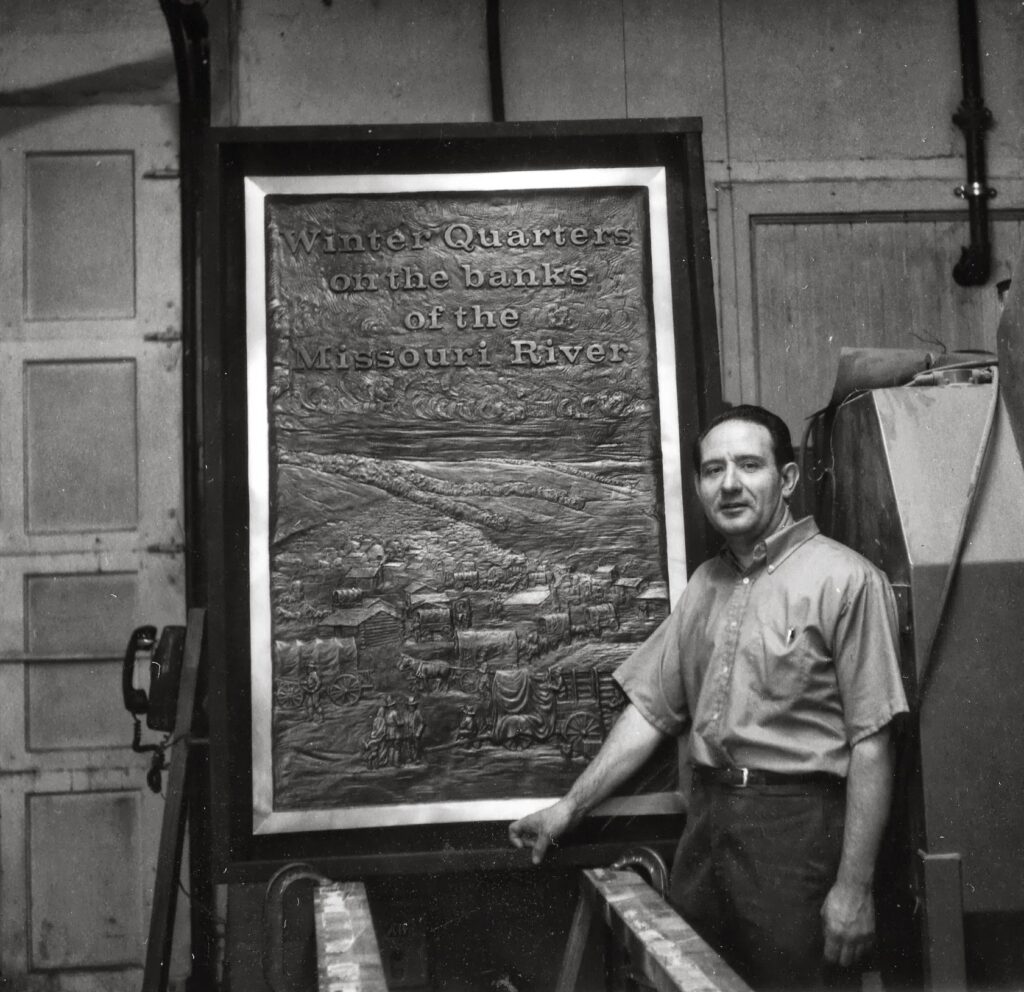
The jobs at BYU meant trip after trip to Provo, sometimes two or three times a day. It became necessary to enlarge the shop, and a casting furnace was built in the rear.
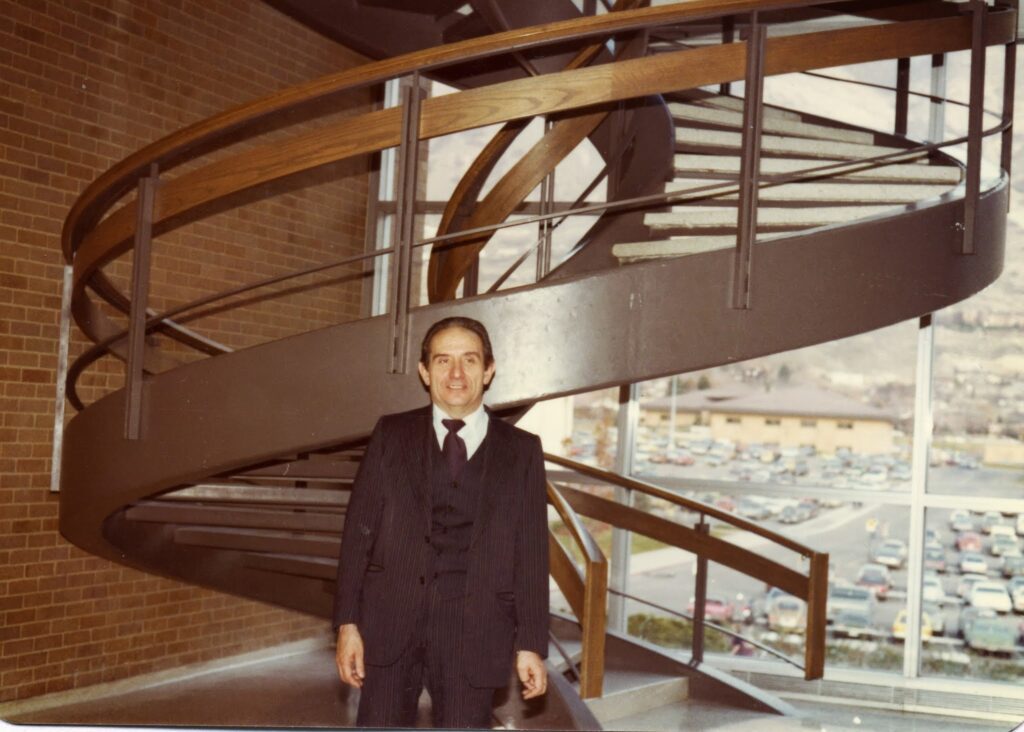
Then in 1958 when a restoration of the Salt Lake Temple was begun, Toledo Metal Arts did important metal work in the temple. One of the major projects was to refinish the 12 oxen supporting the baptismal font. These oxen had been cast in pioneer days and over the years, with water leaking from the font, they had become oxidized and the wood had rotted. It was necessary for them to remove the oxen one by one and take them to another spot where their outer coat could be worked on and restored.
Juan suggested to the contractor that they be sprayed with molten bronze, and brought a metalizing gun for that purpose on his next trip from Spain. One by one the twelve oxen were sprayed with molten bronze which left a rough exterior, and then the hooves and horns of the oxen were made shiny. The architect and temple personnel were all very pleased with the result.
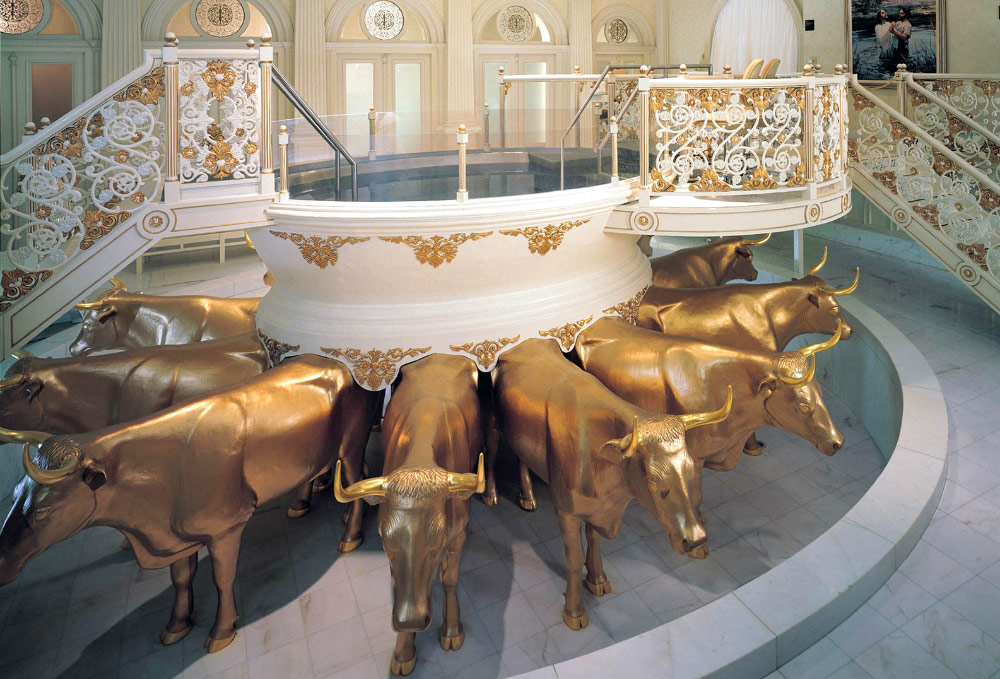
Juan’s shop also made a group of 12 bronze columns that are seen today in the Annex or entry to the temple where recommends are checked. They also made the large pulpit found in the chapel area of the Annex. They removed all of the door knobs and took them to the shop where they were polished up so that the emblem of the beehive and the words, “Holiness to the Lord,” stood out. You can see these door knobs throughout the temple. And if you ever park in the underground parking of the Church buildings, you will notice the metal “bumpers” and angle corners that protect the concrete pillars holding up the roof. These too were made by Toledo Metal Arts.
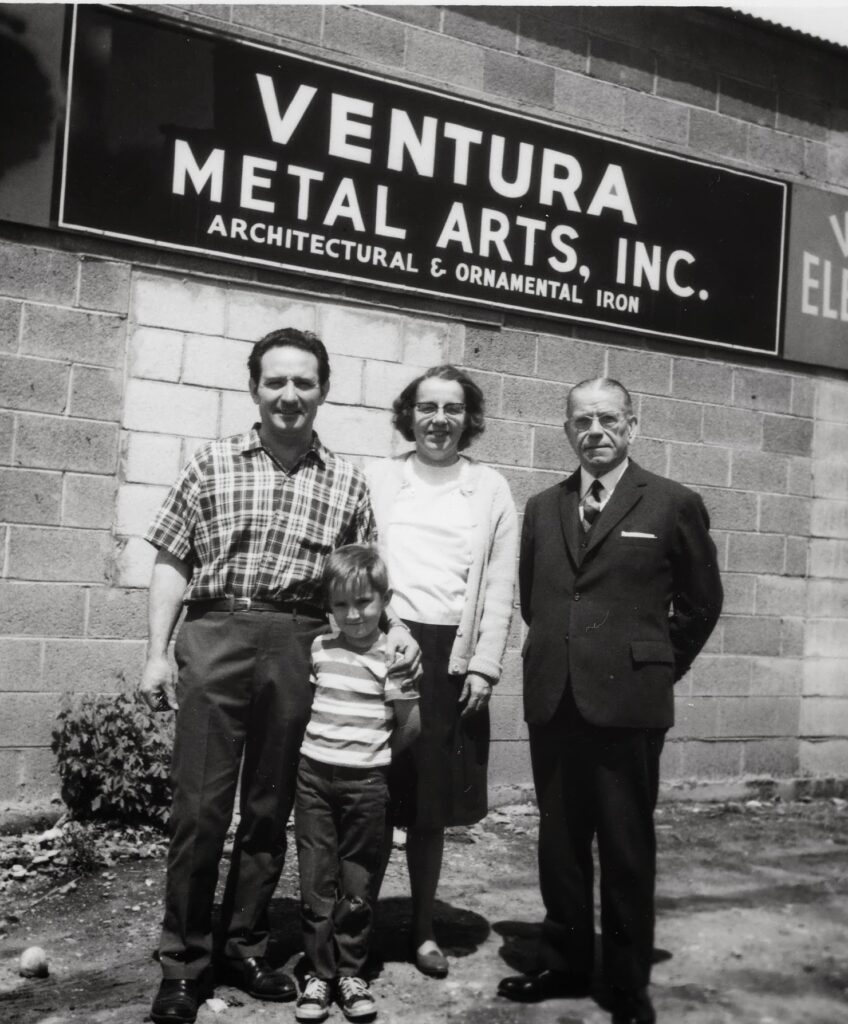
Juan had also set up another company, Ventura Electronics, which manufactured industrial electronics, and in May of 1962 he established Anodizing of Utah, initiating in Utah the process of anodizing metals, especially aluminum. By placing the aluminum part or other metal in large anodizing tanks, in a nine-step process colors are added and the metal’s pores closed, making a more attractive product for ornamental and building purposes.
[Two more sons were born to Juan and Betty. One in 1958, the other in 1960. Juan’s mother came to live with them in January of 1959. They called her Yaya, which is grandmother in Catalan. She took the missionary discussions and was baptized June 15, 1959.]
On August 15, of the following year 1960, we went to the Temple with Yaya and she was sealed to her husband Pere. Juan acted as proxy for his father, then was sealed to them as their son. It was a wonderful experience. The night before, Yaya had dreamed that she was riding in the car with Juan, and Pere was seated in the back seat. He was wearing a light-colored suit. He leaned over the front seat and put his arm around each of them. Then he said to her, “See, it’s alright for me to be wearing white.” He loved to wear light colors and she used to get after him for buying light-colored suits saying that most men in Spain of his age wore darker colors.
The next morning when Juan went into her bedroom, she was crying because of the dream and having seen her husband, and yet she couldn’t understand what it meant. Juan told her that in the Temple we all wore white; she didn’t know that. So of course Pere would be wearing white too. And that the three of them would be together. We had a wonderful experience in the Temple.
[In the fall Yaya returned to Spain.]
The night before she left, we both stayed up late and she began to tell me about her early life. Her mother had never married, although she had four children out of wedlock. That of course made Yaya’s life pretty hard. She said that once when she was a little girl, she went to the market with her mother, and her mother pointed out a man, and said to her, “See, that is your father.” She never knew him any more than that. She must have had many sad experiences being the child of an unmarried woman.
After overcoming all the obstacles of being able to get out of Spain, to get papers in order to be married in Paris, and finally traveling the distance to Salt Lake. Then having Juan survive the challenge of learning a new language and finding a good job. And now here we were, blessed with four wonderful little ones, only six years later. The Lord had certainly showered his blessings upon us!
Leave a Reply